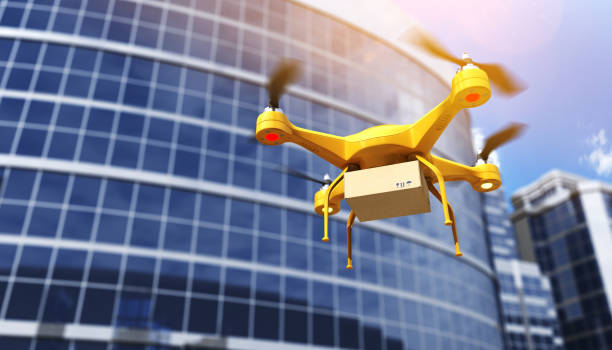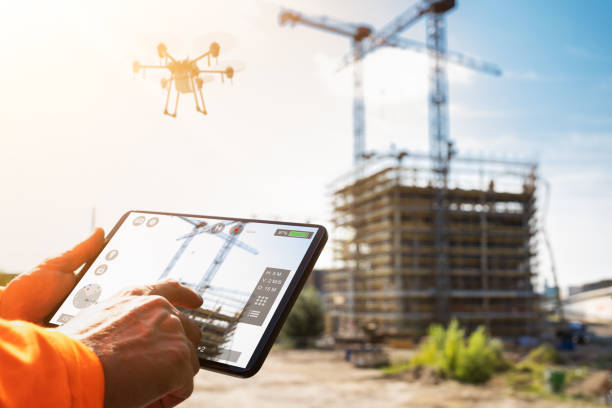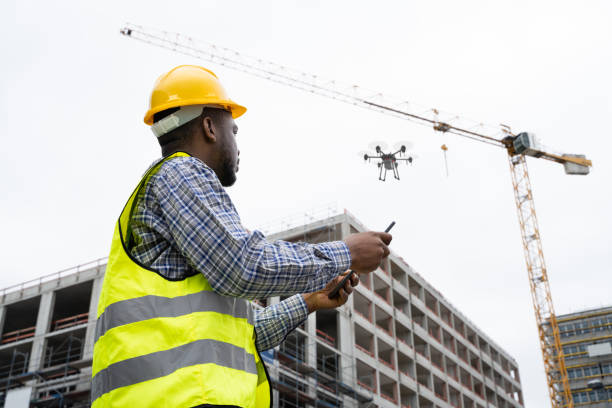Traditionally known for relying on manual labour and heavy machinery, the construction industry is undergoing a digital transformation. At the heart of this revolution are drones, or unmanned aerial vehicles (UAVs), which have begun reshaping how projects are managed, executed, and monitored.
While drones have long been associated with military applications, journalism, and entertainment, they are now becoming indispensable tools in construction. This article explores how drones are changing the construction industry landscape, highlighting their uses, benefits, and significant impact on efficiency, safety, and cost-effectiveness.
What Are Drones and How Do They Work in Construction?
At their core, drones are small, remotely controlled aircraft that can be equipped with a variety of sensors and cameras. Unlike traditional remote-control helicopters, drones can fly autonomously or semi-autonomously, with minimal input from a pilot. They rely on GPS, Wi-Fi, and radio communications to maintain stable flight and execute precise movements. Drones also have sensors that can collect data, such as high-resolution imagery, infrared readings, and 3D mapping.

In the construction industry, drones are used for tasks ranging from surveying and mapping to site inspection and monitoring. They are often paired with specialized software to process the data they collect, allowing construction teams to analyze a project’s status in real-time and make informed decisions that improve efficiency and reduce risks.
The Benefits of Drones in Construction
1. Surveying and Mapping Job Sites
One of the most common uses of drones in construction is surveying and mapping job sites. Traditionally, surveying required large teams of workers and expensive equipment such as total stations or laser scanners. Drones, however, can fly over a site and capture high-resolution images and videos, which can then be used to create detailed 2D or 3D maps of the area. These maps can be used for planning, design, and ongoing site monitoring.
The benefits of using drones for surveying are clear: they reduce the time, effort, and cost associated with traditional surveying methods. What once took days or weeks can now be completed in hours, enabling faster decision-making and more accurate data collection.
2. Monitoring Project Progress
Construction projects often involve multiple stakeholders, including project managers, clients, and contractors, all of whom need regular updates on the progress of the work. Traditionally, site visits were necessary to assess progress, but this process is time-consuming and sometimes unreliable. Drones have changed this dynamic by providing a quick and effective way to monitor and report on project status.
Drones can fly over the construction site and capture real-time footage, which can then be shared with stakeholders. This eliminates the need for frequent site visits and ensures that everyone involved in the project has access to up-to-date information. Additionally, drones can capture progress at different project stages, enabling teams to detect potential delays and adjust before issues become critical.
3. Site Monitoring for Safety and Quality Control
Drones are not just about capturing beautiful aerial footage—they also play a critical role in site monitoring for safety and quality control. Construction sites are dangerous environments, with risks ranging from heavy machinery accidents to falls from heights. Drones can be used to monitor workers’ activities and ensure that safety protocols are being followed. They can also inspect structures for signs of stress, cracks, or other potential hazards that could lead to accidents or delays.
Drones can help construction managers monitor the quality of work in real-time, allowing them to identify potential issues early in the process. For example, suppose there are discrepancies between the physical structure and the design plan. In that case, drones can capture this information quickly, allowing teams to address the issue before it becomes a costly problem.
4. Structural Inspections
Another area where drones are making an impact is inspecting completed or partially completed structures. Inspecting high-rise buildings or hard-to-reach areas traditionally required scaffolding, ladders, or cranes, which are costly and time-consuming. Drones equipped with high-resolution cameras or infrared sensors can inspect buildings from a safe distance, capturing detailed images that would otherwise require a team of inspectors to climb and navigate dangerous areas.
Drones can provide a detailed view of a structure’s condition, highlighting areas needing attention. This technology is particularly useful in identifying problems that may not be visible to the naked eye, such as hidden cracks or areas affected by moisture or temperature changes. This type of inspection can be done much more efficiently and safely compared to traditional methods.
5. Enhancing Safety on Construction Sites
Safety is a top priority on construction sites, and drones can significantly improve it. By using drones to monitor workers and the site, construction teams can reduce the risk of accidents and injuries. Drones can provide real-time data on workers’ locations, ensuring that they are following safety protocols and identifying any potential hazards before they become a threat.
For example, drones can monitor excavation work, ensuring that trenches are dug to the correct depth and that proper safety measures, such as shoring, are in place. They can also monitor the movement of heavy machinery and vehicles, ensuring they do not harm nearby workers.
6. Keeping Projects on Track and Within Budget
One of the most important aspects of managing a construction project is staying on schedule and within budget. Delays are costly in time and money and can lead to reputational damage and financial penalties. Drones can help mitigate delays by providing real-time data on the project’s progress.
By regularly capturing images and video footage of the site, drones allow construction managers to quickly identify potential delays or problems, such as weather-related disruptions or issues with material delivery. Drones can also help with resource allocation by providing insights into which project areas are ahead or behind schedule, enabling managers to reallocate resources to keep the project moving forward.
Additionally, drones can help with cost management by reducing the need for manual labour and expensive equipment. The savings on labour and equipment can be redirected to other project areas, helping to keep the overall costs under control.

How Drones Improve Efficiency and Reduce Costs
Drones have proven to be game-changers when it comes to improving efficiency and reducing costs in construction projects. By automating tasks such as surveying, mapping, and monitoring, drones reduce the need for labor-intensive processes and expensive equipment, leading to cost savings in both the short and long term.
For example, using drones to survey a site can reduce the need for a large team of surveyors, cutting down on labour costs. Drones can also reduce the need for expensive machinery, such as cranes or helicopters, for tasks like inspecting high-rise buildings or hard-to-reach areas. Furthermore, the data captured by drones can be processed quickly and accurately, reducing the time spent on manual data entry and analysis.
The efficiency gains that drones offer also have a ripple effect on the entire project. By providing real-time data, drones enable construction teams to make faster decisions, avoid delays, and keep the project on track. This improves the overall timeline and ensures that the project stays within budget.
The Future of Drones in Construction
As drone technology advances, their role in construction will only grow. Integrating artificial intelligence (AI) and machine learning into drones is already underway, allowing for even more automation and precision. For example, drones may soon be able to autonomously detect structural issues and alert construction teams before problems become critical. Additionally, drones may become even more integrated with other technologies, such as building information modelling (BIM), further streamlining the construction process.
Using drones in construction will also likely become more widespread as regulations evolve. Currently, drone use in construction is subject to various legal restrictions, particularly when flying in urban areas or near airports. However, as regulations adapt to the growing use of drones, their applications in construction will become even more versatile and widespread.
Conclusion
Drones are fundamentally transforming the construction industry, offering numerous benefits that were once unimaginable. Drones are invaluable for construction companies, from surveying and mapping job sites to enhancing safety and reducing costs. As technology continues to evolve, drones will become an even more integral part of the construction process, enabling greater efficiency, accuracy, and safety in construction projects of all sizes. The future of construction is aerial, and drones are leading the way.

